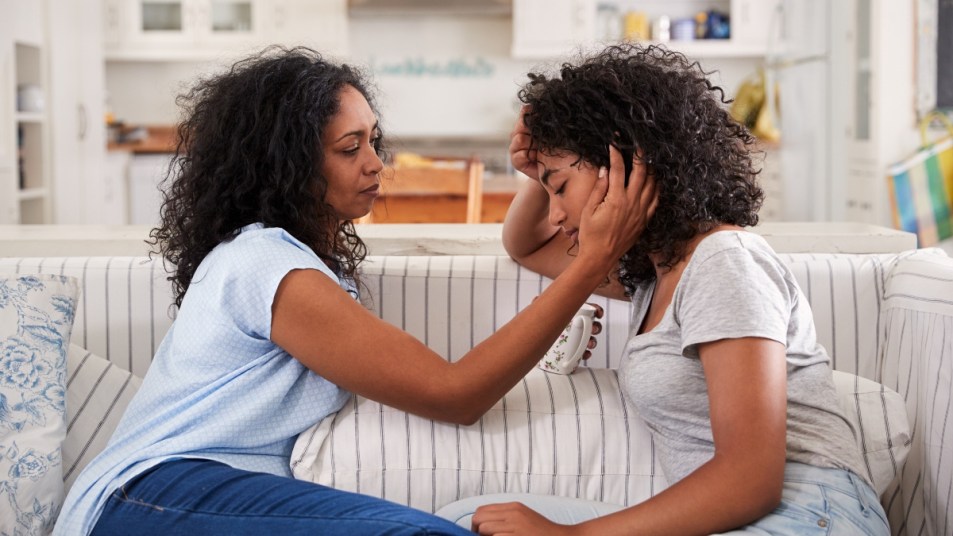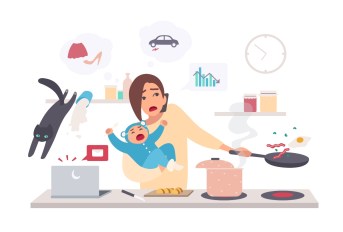Is Your Child’s Sadness Cause for Concern? Here Are the Signs To Look For (and Talk About)
Take action and keep your kids safe.

“I wish I was dead.” Today, when your child says these words, they cannot be brushed off as simple teen angst. There is a chance she is seriously considering taking her life. According to a survey by the CDC, 15.1 percent of 12-to 17-year-olds’ reported having a major depressive episode in 2018-2019. A major depressive episode includes symptoms such as depressed mood, sleep difficulties, and loss of interest in pleasurable activities, lasting for at least two weeks.
About 5 percent of children and teens have depression at some point in their youth, according to the American Academy of Child and Adolescent Psychiatry. And the National Institute of Mental Health estimates that 4.1 million adolescents between 12 and 17 years old had at least one major depressive episode in 2020. At the same time, rates of childhood and youth suicide and suicide attempts have also risen. The number of emergency-room visits for nonfatal self-inflicted injury increased 5.7 percent each year between 2008 and 2015, researchers reported in the Journal of the American Medical Association in 2017. Even more alarming, the rate increased 18.8 percent annually for young women ages 10 to 14.
Suicide among teens and young adults has nearly tripled since the 1940s, according to the Centers for Disease Control and Prevention, with about 4,600 adolescents taking their own lives each year. While suicide was the 10th leading cause of death for all ages in 2013, it was the third leading cause of death for children ages 10 to 14 — and the second leading cause of death for people ages 15 to 34.
What Happened?
Researchers are working to determine why this trend is happening, but experts say there is no single cause. “Suicide, specifically youth suicide, tends to be complicated. It’s very unhelpful to simplify it to one cause,” says John Ackerman, Ph.D., suicide prevention coordinator of the Center for Suicide Prevention and Research at Nationwide Children’s Hospital in Columbus, Ohio. “It worries me when media suggest it boils down to social media or bullying. That isn’t a fair and accurate representation of youth suicide.”
That isn’t to say these aren’t factors. In a recent study, San Diego State University and Florida State University researchers analyzed two nationally representative surveys of more than 500,000 teens in grades 8 through 12. They found that adolescents using social media daily were 13 percent more likely to report high levels of depressive symptoms than those using social media less often. And those spending at least three hours daily on electronic devices were 34 percent more likely to have at least one suicide-related outcome than those on the devices two or fewer hours a day.
But this study was correlational — and controversial. “Do I see the impact of technology and social media? Yes,” Ackerman says. In addition to the loss of face-to-face contact and reduced sense of connection, too much time on social media can also lead to poor sleep and less physical activity, all of which can contribute to depression. But that doesn’t mean social media is the sole cause of suicide-related behaviors.
Kids today also face a lot of demands. “When I see kids with depression or who contemplate suicide, they often feel there is no way out, no reprieve. Life is a hamster wheel of demands and tasks,” says clinical psychologist Joe Dilley, Ph.D., author of The Game Is Playing Your Kid: How to Unplug & Reconnect in the Digital Age. When every day is school, then tutoring, practice, homework, and bed, “they begin to feel, ‘There’s no way out of it, and I don’t know if I can do it.’”
Speak Up
The best thing you can do to help reduce the risk of depression and suicide is to talk to your child, even if you haven’t noticed any changes. “Check in with your kids, whether or not they’re showing warning signs,” says Ackerman. You can frame the conversation about whether they have concerns about their friends. Ask: Do you or your friends ever feel like you are in a tremendous amount of pain? Have you ever thought about ending your life? Has suicide ever come up? “It’s uncomfortable, but do it repeatedly until it’s not,” Ackerman says. “It’s so foreign to want to think about your child being in such pain that dying is more appealing than living, but it’s important to have an honest, open discussion.”
If your child isn’t suicidal or depressed, having this talk will not put thoughts of suicide in their heads. And if he is, it’s important to catch it as soon as possible. Continue open dialogues. “We want to take a catcher’s-mitt approach,” Dilley says. “We are receiving and fielding anything they’re throwing out there, in a nonjudgmental way. This lets them know they can trust and confide in us.”
And if they only say they’re “fine,” help them put words to their experiences. Rather than asking “What’s the matter?”say, “Today must have sucked because you were up so late studying, and I know this teacher won’t give you your grade until Friday.” If your child is contemplating suicide, opening up that conversation “can be an amazing relief for them,” Ackerman says. “It’s an opportunity to unburden themselves of the idea that life isn’t worth living.” Don’t discount what they are saying. Listen and tell them you will get them the help they need. Take him to the ER immediately or call the National Suicide Prevention Lifeline. “Don’t wait until there is a crisis to bring this topic up,” Ackerman says. “Preventing suicide is not one specific intervention but rather a safety net involving many people.”
Know the Signs
There is no one symptom of depression or suicidal thoughts. If one or more of these persist, seek help from a professional.
Signs of Depression:
- Frequent sadness, tearfulness, crying
- Decreased interest in activities or inability to enjoy previously favorite activities
- Hopelessness
- Persistent boredom, low energy
- Social isolation, poor communication
- Low self-esteem, guilt
- Extreme sensitivity to rejection or failure
- Increased irritability, anger, or hostility
- Difficulty with relationships
- Frequent complaints of physical illnesses, such as headaches and stomachaches
- Frequent absences from school or poor performance in school
- Poor concentration
- A major change in eating and/or sleeping patterns
- Talk of or efforts to run away from home
- Thoughts or expressions of suicide or self-destructive behavior
Signs of Suicidal Thoughts:
- Thinking or talking about or threatening suicide
- Seeking a way to kill oneself
- Increased substance abuse (alcohol or drugs)
- Feelings of purposelessness, anxiety, being trapped, or hopelessness
- Withdrawing from people and activities
- Expressing unusual anger, recklessness, or mood changes
- Anxiety, agitation, inability to sleep, or sleeping a lot
- Engaging in risky activities
- Dramatic mood changes
Don’t Do It Alone
Get the information and support you need to support your kid. For more on childhood depression and suicide, consider these resources.
- National Suicide Prevention Hotline: 1-800-273-8255
- American Foundation for Suicide Prevention: afsp.org
- Suicide Prevention Resource Center: sprc.org
- American Academy of Child and Adolescent Psychiatry: aacap.org
- American Association of Suicidology: suicidology.org
- Effective Child Therapy: effectivechildtherapy.org
- Info About Kids: infoaboutkids.org
- Seize the Awkward: seizetheawkward.org
A version of this article appeared in our partner magazine, The Science of Raising Happy Kids, in 2018.













